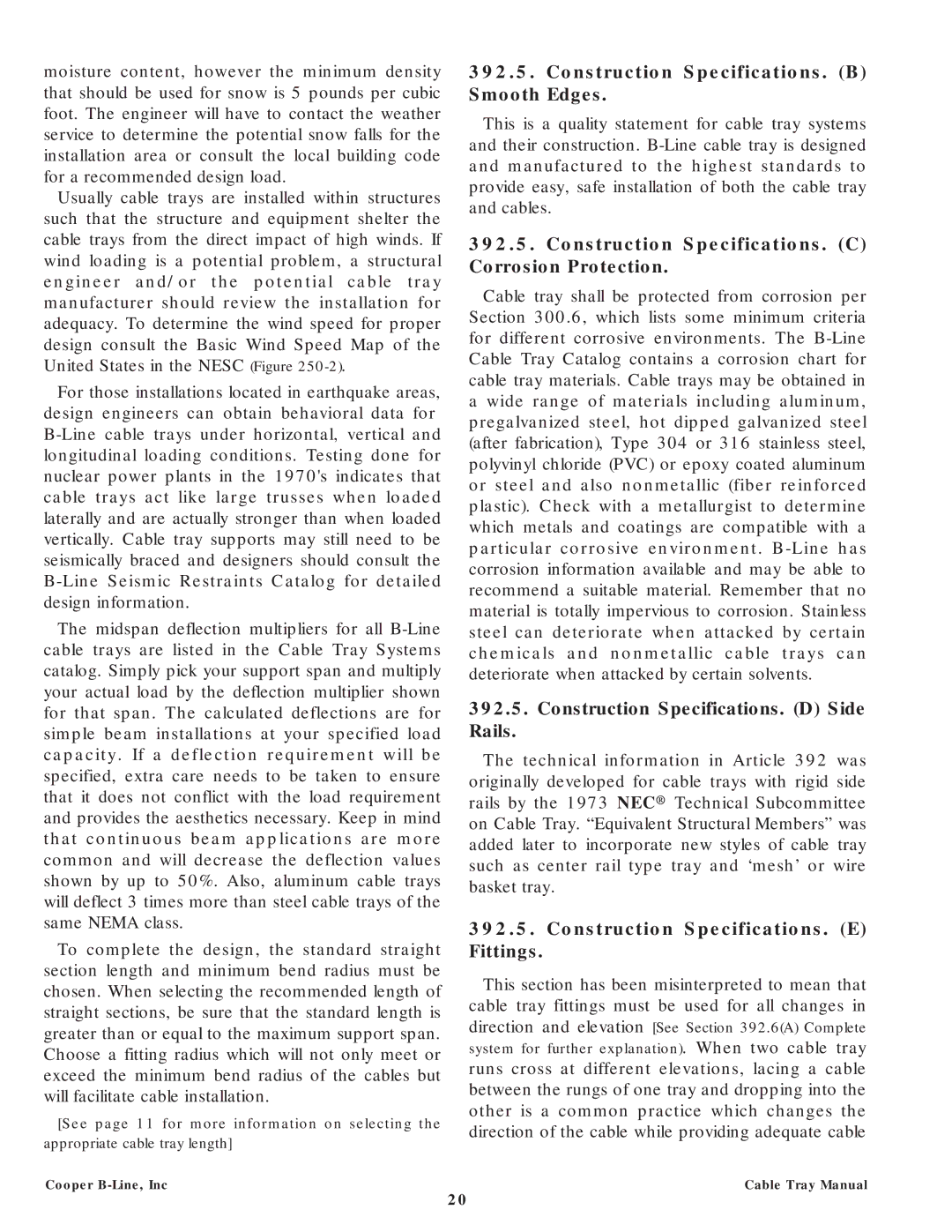moisture content, however the minimum density that should be used for snow is 5 pounds per cubic foot. The engineer will have to contact the weather service to determine the potential snow falls for the installation area or consult the local building code for a recommended design load.
Usually cable trays are installed within structures such that the structure and equipment shelter the cable trays from the direct impact of high winds. If wind loading is a potential problem, a structural engineer and/or the potential cable tray manufacturer should review the installation for adequacy. To determine the wind speed for proper design consult the Basic Wind Speed Map of the United States in the NESC (Figure
For those installations located in earthquake areas, design engineers can obtain behavioral data for
The midspan deflection multipliers for all
To complete the design, the standard straight section length and minimum bend radius must be chosen. When selecting the recommended length of straight sections, be sure that the standard length is greater than or equal to the maximum support span. Choose a fitting radius which will not only meet or exceed the minimum bend radius of the cables but will facilitate cable installation.
[See page 11 for more information on selecting the appropriate cable tray length]
Cooper B-Line, Inc
392.5.Construction Specifications. (B) Smooth Edges.
This is a quality statement for cable tray systems and their construction.
392.5.Construction Specifications. (C) Corrosion Protection.
Cable tray shall be protected from corrosion per Section 300.6, which lists some minimum criteria for different corrosive environments. The
392.5.Construction Specifications. (D) Side
Rails.
The technical information in Article 392 was originally developed for cable trays with rigid side rails by the 1973 NEC® Technical Subcommittee on Cable Tray. “Equivalent Structural Members” was added later to incorporate new styles of cable tray such as center rail type tray and ‘mesh’ or wire basket tray.
392.5.Construction Specifications. (E)
Fittings.
This section has been misinterpreted to mean that cable tray fittings must be used for all changes in direction and elevation [See Section 392.6(A) Complete system for further explanation). When two cable tray runs cross at different elevations, lacing a cable between the rungs of one tray and dropping into the other is a common practice which changes the direction of the cable while providing adequate cable
Cable Tray Manual
20
